If I were to ask you what a whale is, I already know what your answer is likely to be. People mistake categorizing a whale as a large type of fish. I won’t scold you for that, as many people tend to make similar mistakes.
Interestingly, that is not the only thing people get wrong about whales. There are a lot of exciting facts about whales you have been missing all your life! You can relax now as I have compiled some facts about whales that will blow your mind.
There is a lot to learn, but I have made it easy by categorizing these fascinating facts into four groups. If you continue reading this piece, you will find facts about whale species, their feeding, their songs, and general facts about whales. Let’s dive in!
23 Facts About Whales Species
Here you will find exciting whale information concerning their different species. I will also talk about the uniqueness of different kinds of whales.
1. Whales Are Cetaceans

Cetaceans are a group of aquatic mammals. Animals in this category are whales, dolphins, and porpoises. As such, categorizing whales as fish is very wrong.
At the time of writing this piece, there were 90 species of Cetaceans. In 2021, marine mammalogy discovered a new species of Cetaceans in the Gulf of Mexico (tentatively being called the Rice’s whale or the Gulf of Mexico whale).
Some of the most well-known whales are blue whales, sperm whales, humpback whales, killer whales (orcas), beluga whales, narwhals, and beaked whales.
See Related: Is a Fish an Animal? Here’s What You Need to Know
2. Whales Are Mammals

Whales are marine mammals and not fish. They exhibit attributes that are peculiar to mammals.
Whales breathe air using their nose openings above their heads. They also have hairs on their body, and they are warm-blooded animals. Like every other mammal, whales give birth and breastfeed their young ones. The sea lions are another example of marine mammals.
3. Whales Are Classified Into Two Categories – Toothed Whales And Baleen Whales

Whales are classified into two categories depending on their teeth. Whales with teeth are called the odontocetes. The other category is called the mysticetes, and these whales have no teeth but hard, flexible baleens instead. They are otherwise known as baleen whales or whalebone whales. The baleen whales are typically larger than the toothed whales.
4. Dolphins Are Whales
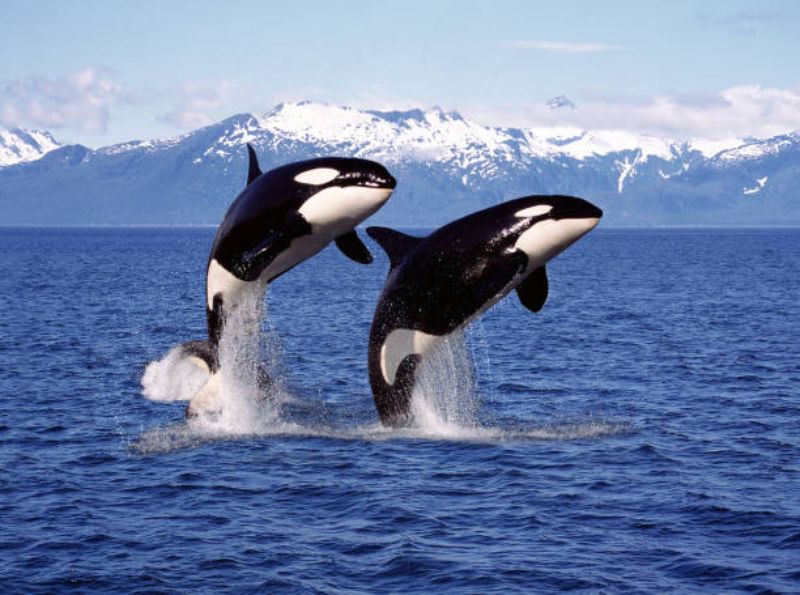
You heard me right!
Dolphins are smaller Cetaceans, and you can regard them as whales. They are toothed cetaceans (or odontocetes) and exhibit some of the same attributes as their larger cousins.
The world’s largest dolphin, the Orcas, is a whale. Orcas are known as killer whales. They are one of the most prominent species of whales.
So there you have it; all members of the dolphin family are whales – but not all whales are dolphins!
See Related: Killer Whale: Is This Animal Endangered?
Facts About Whales Feeding Habit
Whales have a unique feeding habit that is worth studying. In this category, I will enlighten you about some facts about how whales feed.
5. Whales Don’t Chew Their Food
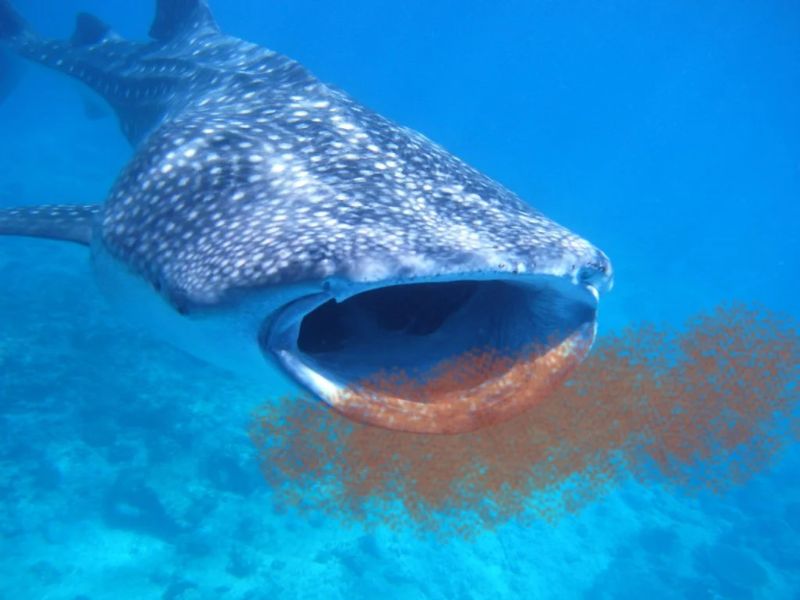
Both the toothed whales and the baleen whales don’t chew their food. Whales are suckers who swallow their food whole rather than chew.
Toothed whales do not use their teeth for chewing but instead for grabbing, tearing, and biting. They either eat swallow their prey whole or rip off manageable chunks before gulping their meal. In contrast, baleen whales skim, suck, and swallow small fish, shrimp, krill, and plankton (depending on the species).
6. Whales Teeth Functions As A Sensory Organ
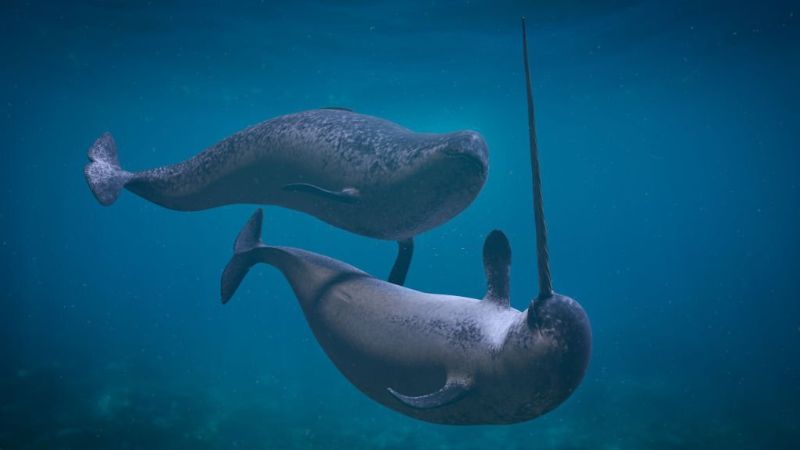
Depending on the species, whales’ teeth serve different purposes. For instance, toothed whales and dolphins (or odontocetes) use their teeth to grab onto and tear prey before gulping it down.
While not strictly “teeth” the whalebone struts of baleen whales (or mysticetes) are used to sift and sieve literal tons of tiny aquatic animals and plants into the whale’s belly.
On the other hand, narwhals use their “teeth” as a means of stunning prey, and as a sensory organ.
Narwhals are a kind of toothed whale (in the same family as the beluga whale) that is known for their tusk. This tusk is an elongated canine tooth that grows over the narwhal’s lifespan. It typically appears only in males, although some females can also grow them (and some males can grow two!).
It’s been widely speculated that the tusks serve a similar purpose to a lion’s mane or elephant tusks; a sign of sexual maturity, dominance, and (in the case of tusks) as a weapon.
This tusk is actually used by the narwhal to hit fish, sending them into a daze. Once stunned they are easier for the narwhal to swallow.
Research on the tusks has also revealed that the tusk is packed with millions of nerve endings, helping narwhals know more about their environment. They can detect slight changes in temperature and motion in the water around them.
A current theory is that when male narwhals rub tusks (once thought to be a dispute) they are actually conveying information about their travels.
7. Whales’ Baleens Are Made of Keratin

Baleens, which replace teeth in baleen whales, are made of Keratin. This is the same substance responsible for hair and nail growth in the human body.
That means whales also secrete this protein, which aids the baleens’ development. The baleen plates are strong but flexible, and they are responsible for trapping and filtering prey from water in the mouth of the animal.
8. Whales Feed On Fish And Other Aquatic Animals

Toothed whales mostly feed on fish, octopuses, and giant squid. They use their teeth and tongues to trap their prey before swallowing. Orcas, also known as killer whales, can feed on sharks and other smaller aquatic mammals.
On the other hand, baleen whales feed on krills, plankton, and amphipods. Skimmers such as the North Atlantic whales swim across plankton patches while their mouth is open. The baleens then trap these planktons as the water washes across the whales.
Suckers such as Gray whales will suck many water-containing amphipods. When their mouth is filled, they release the water and mud while the baleen plates trap the shrimps.
See Related: Whale Shark: Species Overview and Conservation Efforts
9. Whales Have Multiple Stomachs

Whales have multiple stomachs. Research has revealed that whales can have up to three to thirteen stomachs.
Most toothed and baleen whales have three or four stomachs. One kind of whale called the Baird’s Whale has 13 different stomachs! These stomachs are used for saving foods for later and for the digestion process.
10. Humpback Whales May Not Eat For Months

Humpback whales, especially those in the southern hemisphere, take long-term breaks from feeding. Due to their ability to live on their feeding reserves, they may not eat for 5 to 8 months during their tropical breeding. They resume feeding once they are back in Antarctica.
Facts About Whales’ Songs
Yeah, you must have heard about whales singing. Isn’t that weird? The truth is that whales sing, and they do it for different reasons. Here are some interesting facts about whales’ songs;
11. Almost All Whales Sing

Whales produce a patterned sequence of sounds known as whale songs. Male humpback whales, known as inveterate composers, are known to be the most active singers. Other types of whales, including the blue whale, sperm whale, bowhead whale, and fin whale, have also been confirmed to produce sounds.
Whale songs are known to be mating calls. The male humpback sings to display maturity and singleness, thereby attracting females. Whales also sing while using echolocation to navigate their movement across the ocean. The songs also serve the purpose of communication among the animals, and it’s been determined that whales and dolphins have names for each other!
See Related: Blue Whale: Why Is It Endangered?
12. Humpback Songs Have Appeared In A Music Chart

This particular fact is one interesting fact you need to know. Male humpbacks can sing non-stop for 30 minutes, producing beautiful sounds. They can produce a 7-octave sound range, almost the entire piano range.
Dr. Roger Payne released an album called Songs Of The Humpback Whale in 1970. It is one of the most popular collections of whale songs of all time, selling over 125,000 copies and earning multi-platinum status.
See Related: Different Types of Ecosystems Around the World
13. Blue Whales Produce Different Song Patterns Each Season

Blue whales change their song pattern every season. Every member of the group is also capable of learning and singing the new pattern at the start of each season. This is because the blue whale song has a sound that is peculiar to the group they swim with. They are also known to sing at a lower frequency, with the sound intensity measured up to 186 decibels.
General Facts About Whales
Since I have introduced you to some unknown facts about whales, let’s talk about the seemingly general facts. Here you will both learn and relearn some things about whales.
14. Whales’ Ancestors Were Land Animals
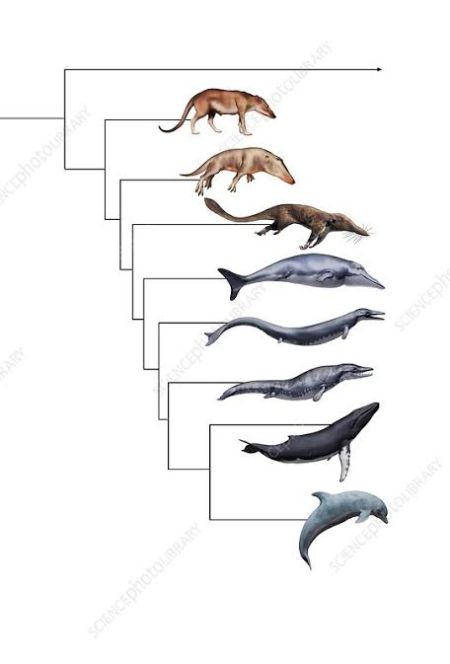
The evolution of whales argues that the ancestors of whales were land animals. The biology and the body of the mammals also support this claim. Hippos have also been traced to be a close relative of the whale.
Scientists debated that both animals evolved from a four-legged ungulate that lived on land 50 million years ago. Marine biologists further proved that the whale ancestors moved to the sea 8 million years ago and evolved to become aquatic mammals.
15. The Blue Whale Is The Largest Animal On Earth

The blue whale is not only the largest whale but also the largest animal on earth. While there is evidence and fossils of much larger sea-dwelling creatures from tens of millions of years ago, the blue whale is currently the largest and the heaviest animal on Earth.
It can weigh up to 200 tons, the equivalent weight of 33 adult elephants. The Antarctic blue whale can reach up to 30 meters in body length.
16. Blue Whales Are Gray
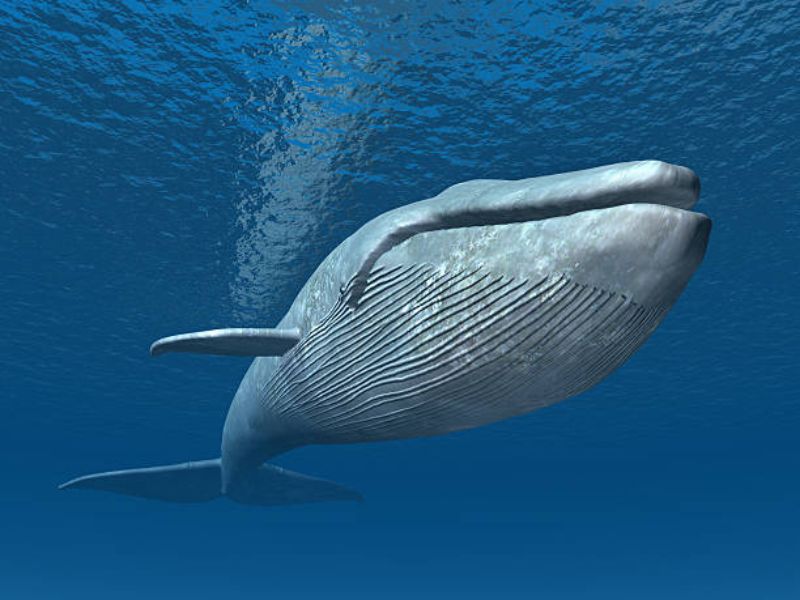
Many people think Blue whales must be blue, but that is not true. The animal has a mottled gray color instead.
They were likely given the name due to the appearance of the water around them anytime they came up to breathe. The animal possesses diatoms on their skin, which is responsible for the bluish glow in the water around them, making them appear blue sometimes.
17. Sperm Whales Have The World Largest Brain

The sperm whale, the largest of toothed whales, also holds the record of the animal with the largest brain. The animal is notable for its large head accommodating a giant brain. If compared, the sperm whale’s brain weighs five to six times the weight of the human brain.
Not only do they have a big brain, but they are also smarter and display elusive surface behavior, as documented in the 19th Century. Several journals of whalers detail how sperm whales can learn from encounters with whaling ships and teach others how to avoid whale hunters.
See Related: Cruel Animals Around the World
18. Sperm Whales Are The Loudest Animal On Earth
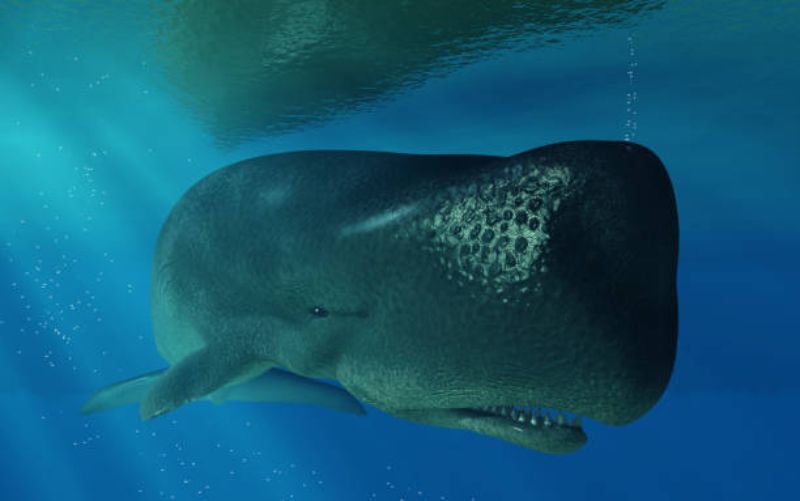
The sperm whale isn’t just the animal with the largest brain but also the loudest animal on Earth. These animals can produce sounds with a sound intensity of up to 230 decibels.
Sounds from sperm whales can blow out the human eardrum if heard in close proximity. The whales have always used it as an advantage to trap their prey.
19. Whales Poop Are Red

Perhaps when riding the waves or doing a spot of snorkeling or scuba diving, you have seen a red substance scattered over the ocean; that might be whale poop.
Whales, especially rorqual whales, consume a large amount of krill, which is red.
During the digestion process inside the whale, the food maintains its red color due to its richness in iron content. As such, when passing feces, whales produce red poop.
Not only do they produce red poop, but they also produce it in large amounts. Judging by how much they consume, whales can excrete up to 200 liters or 55 gallons of feces.
20. Whales Can Switch Between The Two Sides Of Their Brain

Just like other mammals, whales have the right and the left brain. Whales are conscious breathers, meaning they choose when to breathe and can hold their breath for a long time. All cetaceans can shut down a side of their brain while resting. The other side will be active to keep them alert and to breathe.
21. Whales Are Social Animals
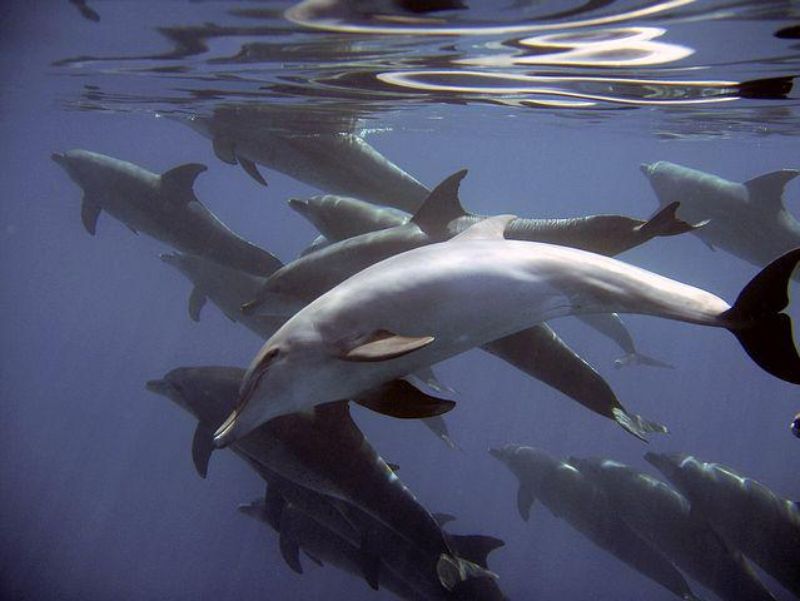
Whales exhibit cultural patterns and behaviors just like humans. They have social structures, and whales communicate using sounds.
The young ones can adapt and learn the behaviors of their parents. Most whales travel in pods, but the larger whale species are often solitary. One of the most well-known killer whale’s interesting facts is that they travel in pods to make their hunting easier.
See Related: Are Fish Endangered? What You Need to Know
22. Whales Contribute To Reduction In Climate Change

Whale poop adds nutrients to the oceans, facilitating the growth of Phytoplankton. These tiny plants are known for pulling carbon from the atmosphere while releasing oxygen. Interestingly, the ocean produces over 80% of the oxygen we breathe.
23. Blue Whales Are Endangered Species
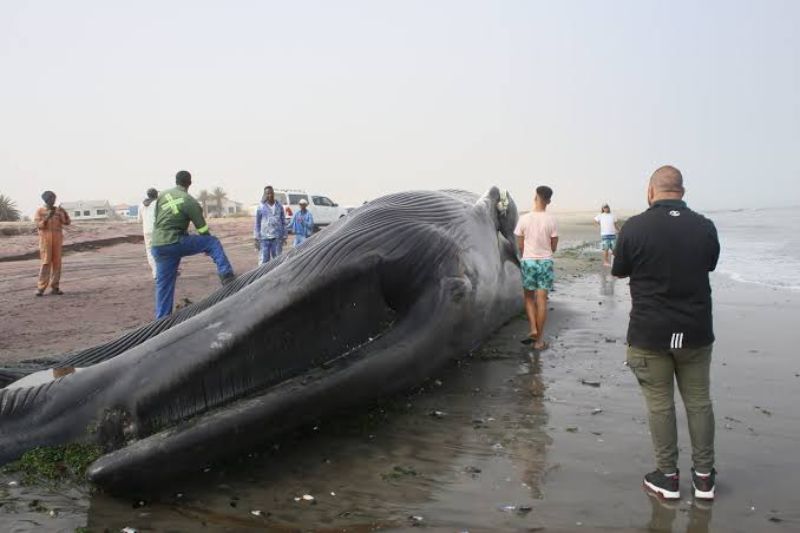
Blue whales, despite their huge size, are endangered species. Commercial whaling activity during the 1800s and early 1900s played a significant role in endangering these animals. Before 1900, there were about 225,000 blue whales before the exploration. There are only about 3,000 of them across the oceans now.
Commercial whaling was initially an activity carried out by people who eat whales and harvest the blubber for oil production and the whalebone for all manner of things, particularly clothing. Today it is illegal to hunt blue whales for commercial purposes.
Other activities that endanger the species are being hunted for science, oil exploration, and ocean industrialization.
FAQs
What Are Whales?
Yes, it may sound stupid, but not everyone gets it right. Whales are not fish. The amazing creatures are marine mammals known as a cetacean. The group also includes both dolphins and porpoises. Some myths regarded it as a sea monster, sirens singing sailors to their doom or the child of the mermaid. Whales are the largest animals you will find in the world’s oceans.
What Dolphin Is A Whale?
All dolphins are considered a whale. The most prominent of them are the orcas, also called killer whales. One of the facts on orcas you need to know is that it is also known as the killer whale and of the most dangerous of this animal.
Among the Killer whale fun facts; they also prey on other smaller whales. Another species of oceanic dolphin is called the false killer whale and bears a passing resemblance to an orca, sharing a similar skull shape and coloring.
What Does A Whale Look Like?
Of course, a whale looks a lot like a fish. They are not fish but Cetaceans, i.e., Marine mammals.
Whales have a lot of the same qualities as a fish, including a tail, and fins, however, their tails are “horizontal” rather than “verticle”, they lack dorsal fins, gills, and scales (typical of most fish), and they must come to the surface to breathe air.
How Many Types of Whales Are In Existence?
There are continuous discoveries of new species and subspecies of whales. Presently, about 90 species of Cetaceans exist. The most famous whale types are blue whales, sperm whales, humpback whales, bowhead whales, orcas, narwhals, beluga, rorqual whales, beaked whales, minke whales, white whales, and gray whales.
Related Resources


